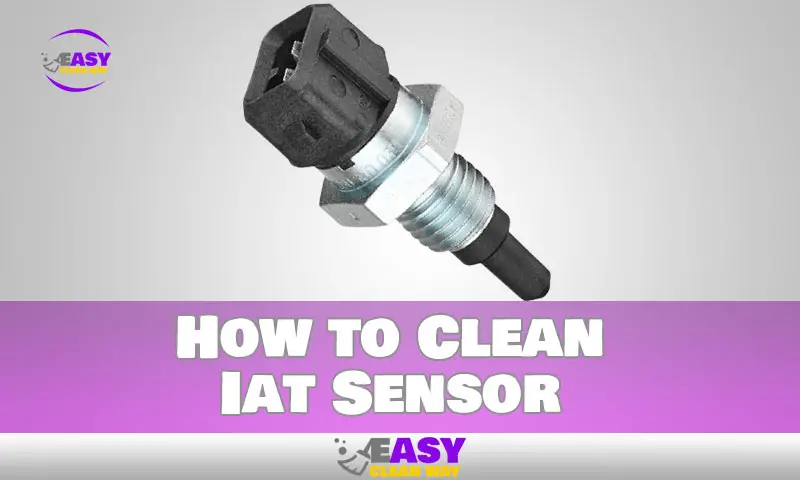Cleaning your IAT sensor is an essential part of keeping your vehicle running to its fullest potential.
Having a clean IAT sensor can help you get better mileage, increase your vehicle’s performance, and save you money on costly repairs. If you don’t clean your IAT sensor regularly, it can cause complications such as decreased engine power, excessive fuel consumption, and even engine stalling.
In this article, we’ll provide an easy-to-follow guide on how to clean your IAT sensor with ease. We’ll cover the tools and supplies that you’ll need, the step-by-step procedure for cleaning the sensor, and tips to ensure that your efforts are successful. By the end of this article, you’ll be able to have a cleaner and healthier vehicle in no time!
What Is an IAT Sensor?
An IAT (Intake Air Temperature) Sensor, also known as a Mass Air Flow (MAF) Sensor, is an essential component of your engine’s efficiency. It measures the amount of air entering your engine, and this information is used by the vehicle’s computer to adjust the fuel/air mixture for optimal performance.
However, over time, dirt and dust build up on the IAT sensor, reducing its accuracy and causing problems such as hesitation, poor engine performance and even misfires. To keep it in good condition, it’s important to clean your IAT sensor every 15,000 – 20,000 miles or so using a MAF sensor cleaner or electrical contact cleaner. Alternatively, compressed air or rubbing alcohol with a q-tip can also be used.
The Reasons Behind Cleaning It
For many reasons, it’s crucial to maintain your IAT sensor clean. Your car may experience a number of performance issues as a result of a dirty or clogged IAT sensor. Incorrect air-fuel ratio, lower fuel efficiency, and decreased engine power are some of these problems. The engine light will also illuminate and remain on until the dirty or clogged sensor is cleared.
It’s best to clean the IAT sensor at least every 15,000 to 20,000 miles to avoid these issues. The best and safest product to use for this task is MAF cleaner because it won’t harm the IAT sensor’s sensitive electrical connectors or its plastic housing. Finally, it’s crucial to make sure that all dirt and debris are removed from the IAT sensor before reassembly using compressed air and MAF sensor cleaner.
What You Need to Clean the Sensor
Cleaning your IAT sensor doesn’t have to be a daunting task. All you need are the right tools and a few simple steps, and soon you’ll have your sensor working like new again.
Tools You Need
To get started, you’ll need a few basic tools:
- A Torx T30 screwdriver, used to remove the sensor from its housing.
- A zip-locked bag filled with isopropyl alcohol (IPA) for soaking the sensor.
- MAF/IAT/MAF Sensor Cleaner or comparable carb cleaner for de-greasing the sensor before and after cleaning.
By having all these tools ready before beginning, your cleaning process will go smoothly and quickly.
Step-by-Step Guide to Cleaning IAT Sensor
IAT sensor cleaning only requires a few straightforward steps and is a simple task. First, take the IAT sensor out of the manifold housing. Spray it with isopropyl alcohol or an electric parts cleaner next. The IAT sensor should then be sprayed with MAF cleaner or electrical cleaner, and left to sit for 15 minutes. Lastly, test the IAT sensor with an ohmmeter and water to make sure it is clean before reinserting it into the manifold. These methods should ensure that your IAT sensor is working perfectly once again.
Tips and Tricks for Keeping the IAT Sensor in Good Condition
Keeping your IAT Sensor in peak condition is the key to ensuring your engine is running at optimum capacity. To ensure that your IAT Sensor is always providing accurate readings, follow these simple tips and tricks:
Clean Regularly
Regularly cleaning your IAT Sensor with a professional-grade MAF Cleaner is a great way to ward off grime and dust that may corrode it. This steps helps to prevent buildup of dirt, dust and debris, which can interfere with the accuracy of the sensor. It’s a simple step that you can perform on your own in just a matter of minutes.
Check for Damage or Corrosion
Inspect the IAT Sensor from time to time for any signs of damage or corrosion. If you notice any discoloration, it may be time for a replacement – otherwise you risk inaccurate readings from your engine’s computer system.
Keep Air Filters Clean
Your engine relies on clean air intake filters to keep the IAT Sensor operating properly, so be sure to replace these filters regularly. Doing so will help ensure that your engine is getting the data it needs from the MAP Sensor for optimal combustion.
Troubleshooting Issues With IAT Sensors
There are a few important things to watch out for while troubleshooting problems with your IAT sensor. A malfunctioning component that does not respond to warm air or any other heat source is typically one of the indicators of a bad IAT sensor. Moreover, you can experience rough engine operation and check engine light illumination. It is advised to clean your IAT sensor every 15,000–20,000 miles to make sure it is functioning properly.
Aerosol cleaners for electronics or carbs work well for cleaning IAT sensors. For best efficacy, just spray the cleaning directly onto the sensor and then rinse it off with water. Before putting the sensor into the car after cleaning, check sure it is totally dry. This procedure should assist maintain the functionality of your IAT sensor and guarantee consistent smooth operation of your vehicle.
People Also Like: How to Clean Calico Critters
Conclusion
If you own a vehicle with an IAT sensor, it’s essential that you take care of it in order to ensure your car runs properly and efficiently. The best way to clean your IAT sensor is to use a specialized cleaner, such as one specifically made for IATs, as they are designed to break down the dirt and residue without damaging the delicate parts inside. Additionally, you should always make sure to refer to your vehicle’s instruction manual before carrying out any cleaning procedure, as different makes and models may have different procedures. By understanding the basics of how your IAT works and how to clean it, you can keep your car running at its best and avoid having to buy a new sensor.
Hey there! I’m Alton Smith, your Clean Expert blogger. I’m on a quest to help you conquer chaos and embrace the joys of a tidy life.





